


|
Commenced:
|
01/07/2014 |
|---|---|
|
Submitted:
|
09/01/2016 |
|
Last updated:
|
23/03/2017 |
|
Location:
|
Phoenixville, Pennsylvania, USA, Phoenixville, PA, US |
|
Phone:
|
email permscape@gmail.com |
|
Website:
|
http://www.permscape.com |
|
Climate zone:
|
Cool Temperate |
(projects i'm involved in)
Back to Aquaponics and Aquaculture Perennial Garden
Project: Aquaponics and Aquaculture Perennial Garden
Posted by John Stevenson over 8 years ago
For many years we have received calls asking what plants grow well in aquaponics systems. The easy answer is everything.
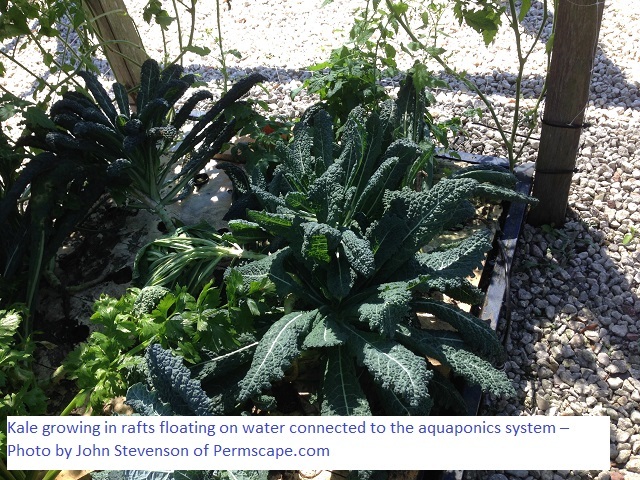
Some plants require special care (such as a watering timer). Other plants do better in a wicking bed, most do well in rafts, tomatoes thrive in Dutch buckets, and some plants prefer to grow in deep gravel beds.
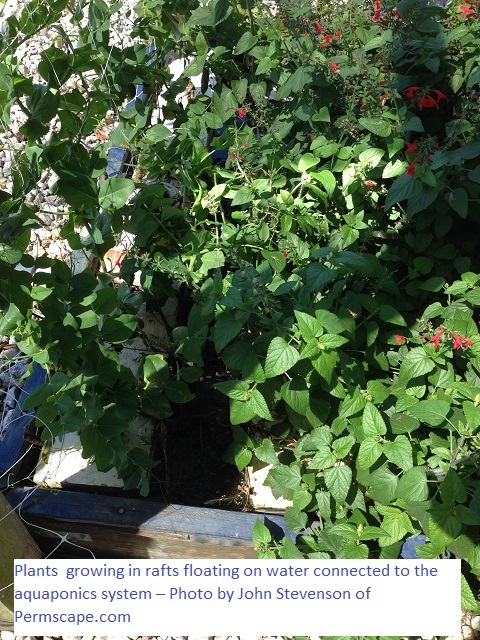
We are by no measure purists. We also grow directly in soil. The water generated by cleaning our aquaponics filters is delivered by gravity to our fertigation system. This in turn delivers the nutrients to the fruit trees and gardens throughout the property. The solids in the system are fed to composting worms and converted into additional worms and rich soil.
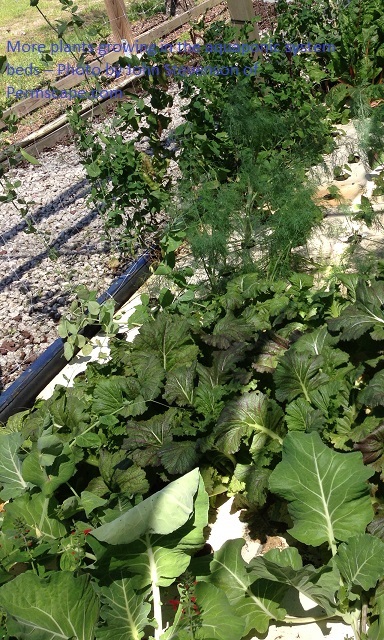
Fish waste is an amazing resource.
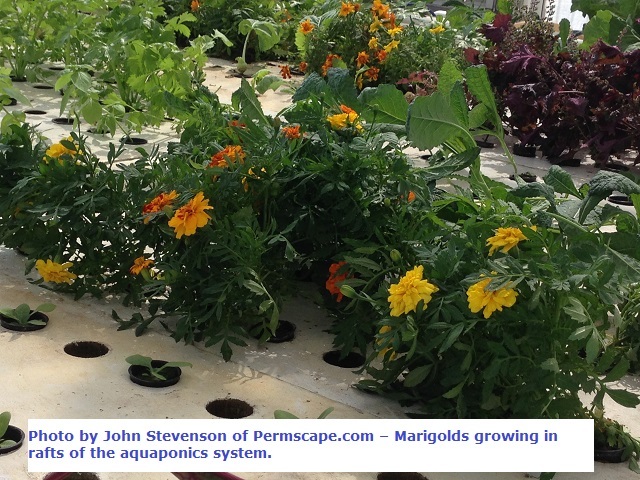
Incredible varieties of vegetables, edible and decorative flowers, and fruits can be grown from water supplied from fish tanks or ponds.

The plants remove the nitrates (which are created naturally by bacteria, in the system, which are constantly converting the ammonia generated by the fish).
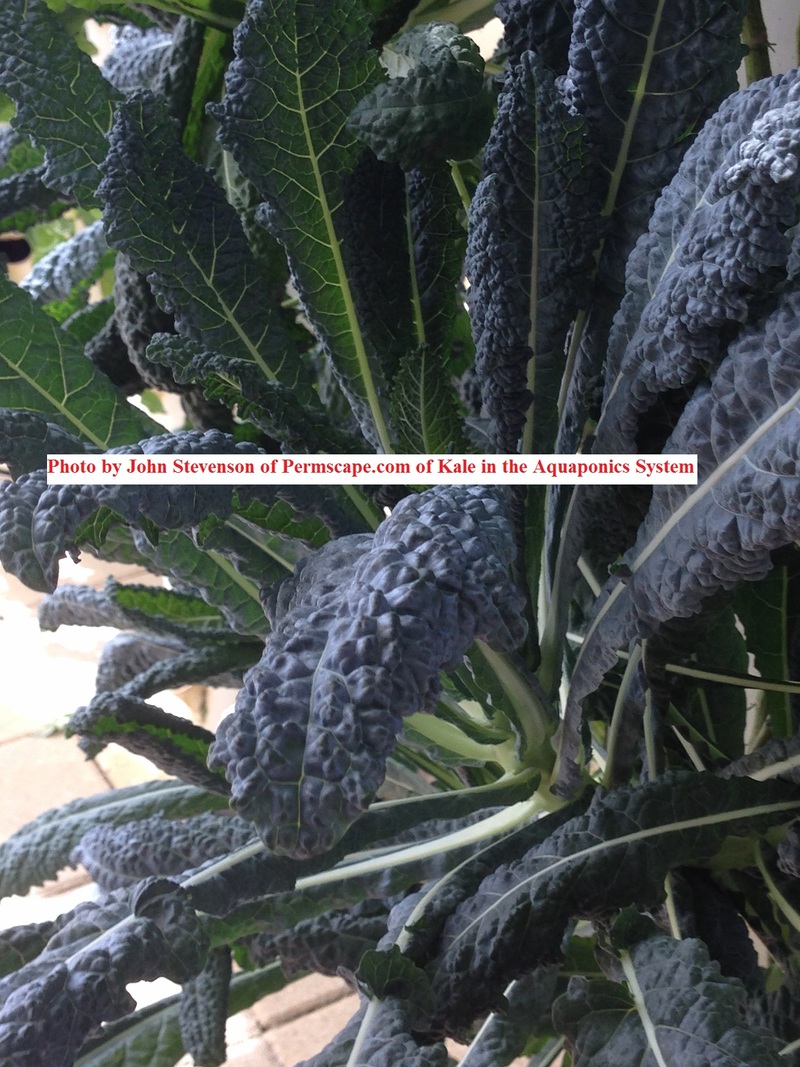
The carbon dioxide generated in the system likewise is taken up by the plants and converted into oxygen.
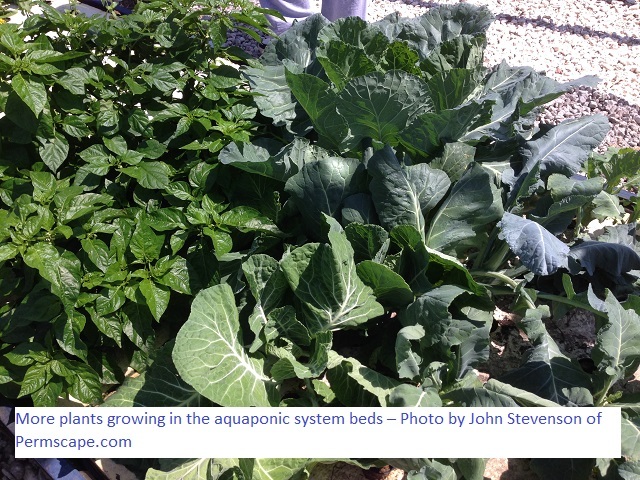
More photos to follow in future updates.
You must be logged in to comment.
Note: The various badges displayed in people profiles are largely honesty-based self-proclamations by the individuals themselves. There are reporting functions users can use if they know of blatant misrepresentation (for both people and projects). Legitimacy, competency and reputation for all people and projects can be evidenced and/or developed through their providing regular updates on permaculture work they’re involved in, before/after photographs, etc. A spirit of objective nurturing of both people and projects through knowledge/encouragement/inspiration/resource sharing is the aim of the Worldwide Permaculture Network.
 |
MemberA member is a permaculturist who has never taken a PDC course. These cannot become PDC teachers. Members may be novice or highly experienced permaculturists or anywhere in between. Watch their updates for evaluation. |
|---|---|
  |
Permaculture MatchmakerOne of these badges will show if you select your gender and the "I'm single, looking for a permaculture partner" option in your profile. |
 |
PDCPeople who claim to have taken a Permaculture Design Certificate (PDC) course somewhere in the world. |
 |
PDC VerifiedPeople who have entered an email address for the teacher of their PDC course, and have had their PDC status verified by that teacher. Watch their updates for evaluation. |
 |
PRI PDCPeople who’ve taken a Permaculture Research Institute PDC somewhere in the world. |
 |
PDC TeacherPeople who claim to teach some version of PDC somewhere in the world. |
 |
PRI TeacherWith the exception of the ‘Member’ who has never taken a PDC, all of the above can apply to become a PRI PDC Teacher. PRI PDC Teachers are those who the PRI recognise, through a vetting board, as determined and competent to teach the full 72-hour course as developed by Permaculture founder Bill Mollison – covering all the topics of The Designers’ Manual as well as possible (i.e. not cherry picking only aspects the teacher feels most interested or competent in). Such teachers also commit to focussing on the design science, and not including subjective spiritual/metaphysical elements. The reason these items are not included in the PDC curriculum is because they are “belief” based. Permaculture Design education concerns itself with teaching good design based on strategies and techniques which are scientifically provable. PRI PDC Teachers may be given teaching and/or consultancy offerings as they become available as the network grows. |
 |
Aid WorkerThe individual with this badge is indicating they are, have, or would like to be involved in permaculture aid work. As such, the individual may or may not have permaculture aid worker experience. Watch their updates for evaluation. |
 |
ConsultantThe individual with this badge is indicating they are, have, or would like to do paid permaculture design consultancy work. As such, the individual may or may not have permaculture consultancy experience. Watch their updates for evaluation. |
 |
Community ProjectCommunity projects are projects that help develop sustainable community interaction and increase localised resiliency. |